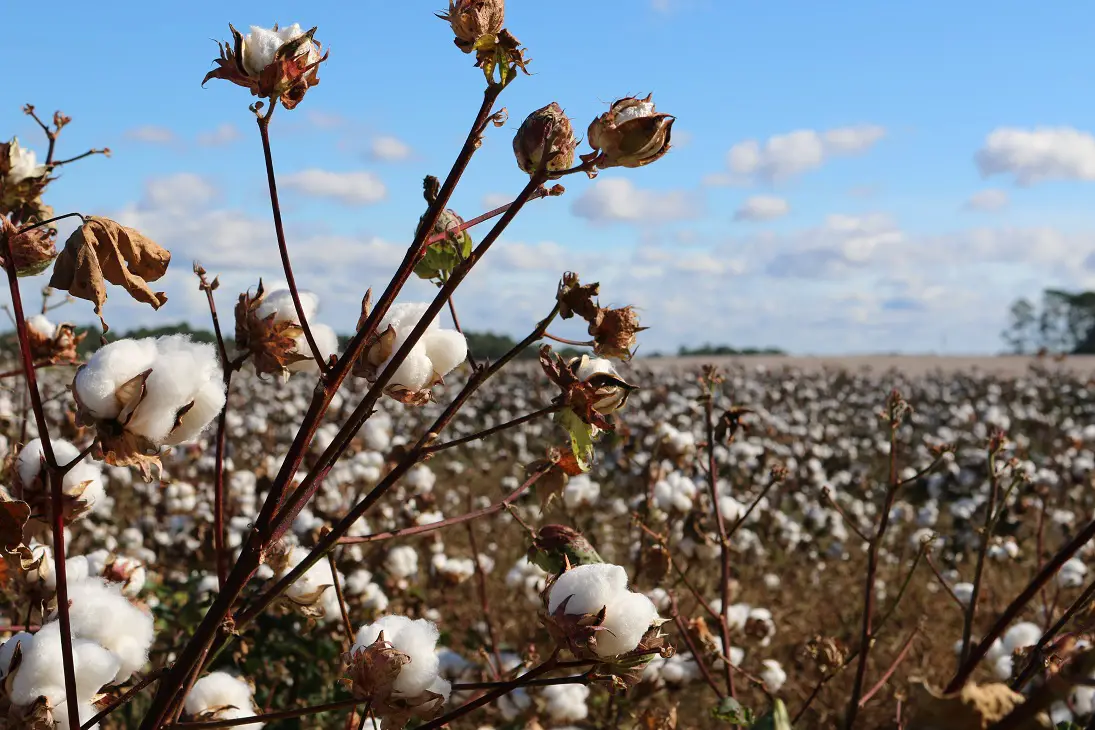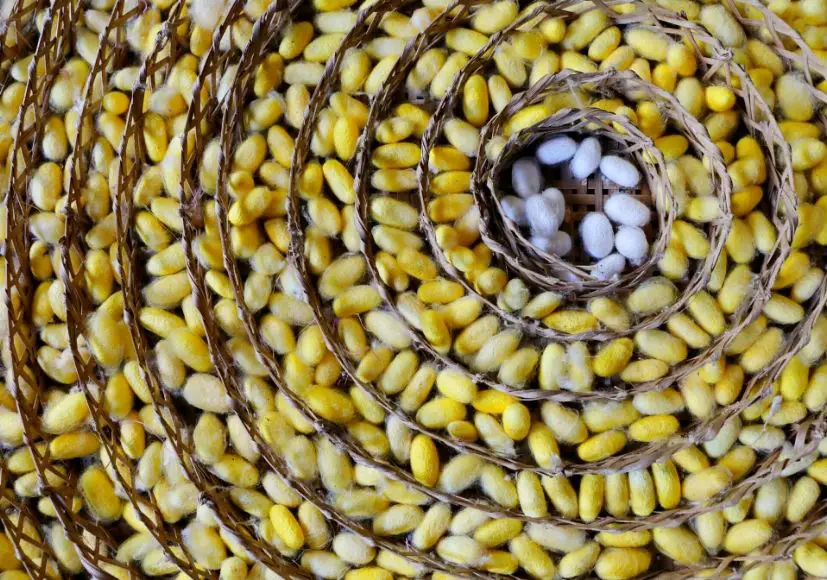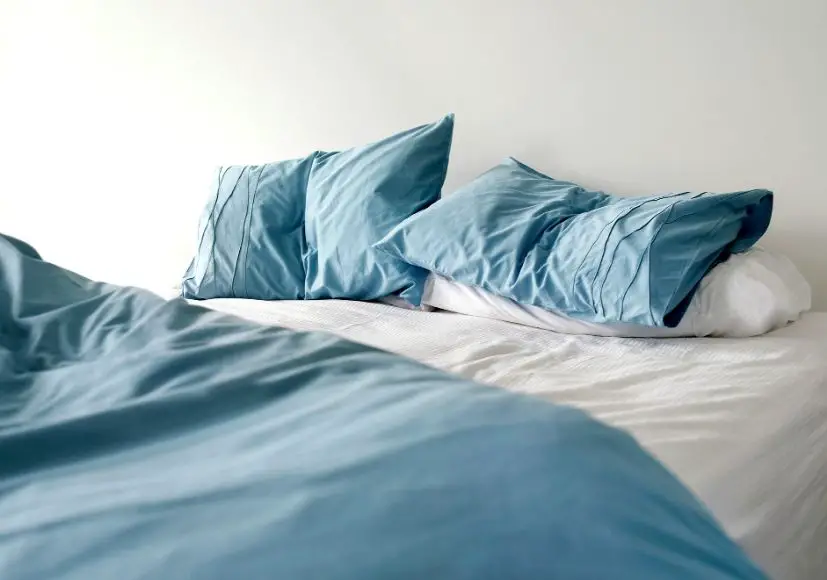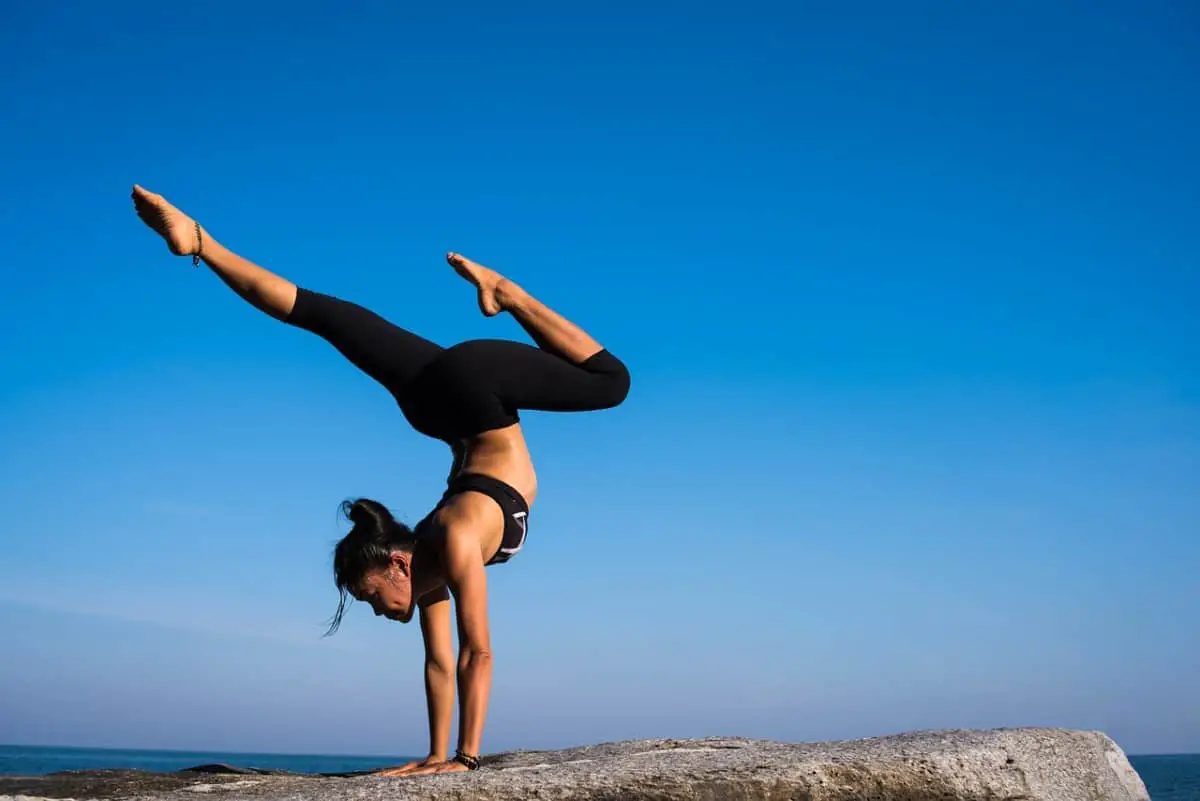Table of Contents
**This page contains affiliate links and I will be compensated if you make a purchase after clicking on my links**
100% cotton sheets are the gold standard of bedding. Relatively inexpensive and easy care. They soften over time with washing and use. They breathe, which helps you keep cool.
But for those of us who “sleep hot” is there a better material? Absolutely.
The problems with cotton
Anyone who exercises knows that cotton is one of the worst materials to wear. Yes, it breathes, but it also gets wet with sweat. Wetness weighs down your clothing, restricting motion. And more importantly, wetness stays close to your skin and causes you to become chilled and clammy as soon as you stop your activity.
Instead, we all work out wearing synthetic fabrics that are designed to wick moisture from the inside to the outside. “Wicking” relies on the capillary action of liquid to move through tiny spaces created by the fabric. This wicking action not only removes the annoying wetness but increases evaporation which helps keep us cool.
Wicking fabrics can be either natural or synthetic. Synthetics tend to be “hydrophobic”. (“Hydro” = water; “phobic” = afraid.) Hydrophobic materials do not absorb water.
Many of us older folks remember old fashioned nylon and polyester. Wearing—or worse, sleeping—with those fabrics resulted in a sweaty nightmare.
Fortunately, the newer synthetic fabrics are engineered specifically to facilitate wicking. Because the material itself is hydrophobic, any wetness is “directed” to the outside and doesn’t stick around.
Likewise, many tried and true older natural fibers also have wicking ability, coupled with breathability.
Cotton is the opposite. It’s “hydrophilic” and famously absorbs and holds on to water. (“philic” = love.)
Because cotton holds moisture and therefore creates a humid micro-climate, there is a concern that it may encourage the growth of mold and maintain a breeding ground for dust mites. Both are bad for those of us with allergies.
Likewise, by holding onto our sweat, cotton also feeds the bacteria that generate body odor.
This problem is easily remedied for sheets and washable bedding—as recommended by allergists, simply wash on hot!
For this reason, avoid using cotton in non-washable bedding and mattresses. (Perhaps Grandma’s quilt should be displayed on the wall instead?)
Fortunately, there are alternatives to cotton. Both natural fibers, and advanced synthetics used for active wear can be used in bedding as well.
Choice of weave
Cotton and other fibers may come in a choice of weaves, that may affect their cooling properties a tad:
- Percale. This is your typical “over-under-over-under” weave. This weave has the best breathability.
- Sateen. A thicker weave, sateen has a luxury feel, but doesn’t breathe as well as percale.
- Jersey knit. A knit just like your t-shirt, with stretchiness and softness to match.

Photo by Trisha Downing on Unsplash
Thread count
Greater thread count isn’t necessarily better, especially when it comes to feeling cool.
For natural fiber bedding, longer fibers are better, providing a more durable sheet, and a softer, smoother, more luxurious feel. For cotton, these fibers are referred to as long staple and extra-long staple.
Egyptian cotton and Pima cotton (sometimes marketed as Supima® cotton) are both examples of extra-long staple cotton. (However, beware most bedding labeled “Egyptian cotton” are not.)
When shorter staple cotton is used, the strands must be twisted together before being woven. Sometimes the manufacturer will cheat and count each strand as a “thread” in the thread count.
These high-thread-count sheets may have a dense weave that limits breathability. In contrast, extra-long staple cotton can maintain a slightly more relaxed breathable weave.
The consensus is that the ideal thread count should be about 300-350 for percale cotton. Thread counts for other fibers, both natural and synthetic will vary.
Natural materials for bedding
Natural materials share cotton’s ability to breathe and may even be hydrophilic. But unlike cotton, are much better at wicking away moisture.
Linen
Linen is made from the fibers in the stalks of flax plants and has great breathability due to its large fibers and open weave. Indeed, the thread count for linen bedding is much less than that of cotton.
Linen conducts both moisture and heat and is, therefore a popular fabric to wear in hot weather.
It is considered antibacterial, which is one reason historically bandages have been made from linen. This could be either due to its low moisture retention, or some natural chemical associated with it.
Linen also resists rotting, which is why wrapped Egyptian mummies have held up so well.
Note that its antibacterial properties have not been scientifically confirmed. However, no natural fiber is completely resistant to bacteria.
Linen is stronger and more expensive than cotton, and famously wrinkles. Like cotton, continued washing will soften it, but this process will take longer.
Because of linen’s durability, bedding may last for decades.
>>For examples, check out the Resources page on Cooling Sheets
Wool
As any winter outdoor enthusiast is aware, wool is a great base layer. It absorbs some water but is naturally very good at wicking. Unless drenched in water, it usually feels dry to the touch.
Wool is a great material in all seasons: warm in winter and wicking in summer.
Some complain that wool feels itchy to the touch, however, newer wool products made of thinner fibers can feel very soft.
Although wool sheets don’t appear to exist (yet?) there are many choices when it comes to mattress covers, comforters, blankets, and pillows.
Because it holds little moisture, wool is considered resistant to mold and other allergens.
However, no material is completely free of allergens; make sure you purchase “washable” wool bedding and wash in hot water often.

From a silkworm farm in Thailand. Image © Somchai Numnim via Canva.com.
Silk
Silk is another breathable material with good wicking properties. It is also lightweight, shiny, and smooth to the touch which is one reason it has been associated with luxury. Longer threads are more durable and produce a shinier look.
Silk is a natural fiber made by the silkworm. Different types of worms create different types of silk. The most common used for silk production is mulberry silkworms, which as the name implies, are raised indoors and fed exclusively leaves of the mulberry plant.
Sometimes silk is marketed as “mulberry silk”. As ninety percent of silk sold comes from the mulberry silkworm, this label isn’t as exclusive as it sounds.
Like wool and linen, it is considered resistant to allergens, most likely because it also resists dampness.
If you have difficulty turning over in your sleep, or if you’re an active sleeper that gets knotted up in your sheets, then the smoothness of silk sheets may be of benefit. (However, if you tend to slide off the edge of your bed, then avoid these sheets.)
Silk pillowcases may also prevent “bed-head” and even hair damage and thinning by allowing your hair to move more freely.
There is also some evidence that silk has anti-aging skin benefits however this may be due primarily to its ability to not over dry skin.
The downside of silk is cost. (Perhaps try the pillowcases first?)
Silk doesn’t have a “thread-count” like other sheets. Instead, the thread density is measured by “momme”. One momme = 4.340 grams per square meter. A higher momme indicates an opaquer fabric with greater durability.
For bedding, a momme of 19-25 is recommended.
Furry friend alert: unlike other fabric, silk is very susceptible to pulled threads from little claws
Pet owners are used to not having nice things. Clawed silk is still functional.
Be careful when shopping. 100% polyester satin is often marketed as “silk”. Also, sometimes silk can be combined with other materials, including cotton, linen, or wool.
As with all bedding, confirm that your silk is washable. More delicate washing may be required; with air-drying only.
>> See the results, as I attempt to machine wash silk in hot water.
Bamboo, Eucalyptus, Tencel™, and Modal
Wood pulp can be processed to create fibers with good breathability and wicking properties. Like wool and silk, these fibers are considered hypoallergenic.
Wood pulp is mostly cellulose, which is a major component of plant cell walls and is responsible for maintaining the plant structure. It is cellulose which is used to create the fibers.
Keep in mind that cellulose is also the main component of cotton and linen.
The general term for a wearable fiber derived from plant material is called rayon. There are three different processes to make rayon, which create viscose, Lyocell, and Modal.
All these fibers are used in clothing and bedding. Sometimes the original wood used is specified; sometimes not.
Bamboo is sometimes labeled “viscose” or “viscose bamboo” based on how it’s processed.
Most Lyocell and Modal are sold under the brand name Tencel™. Other unbranded Lyocell is available, including bedding made from Eucalyptus.
The manufacturer of Tencel™, Lenzing (Austria) carries several US and EU sustainability certifications. Modal is derived from beech wood. The wood for Lyocell is not specified. In both cases, the tree sources are sustainable.
In addition, compared to the older viscose method, both the Lyocell and Model manufacturing processes are designed to use fewer chemical treatment steps, which includes almost complete recovery of the used solvent in a “closed-loop process” (Lyocell), reducing the environmental impact on all fronts.
Compared to silk, the price of bamboo and similar fibers, are much more economical.
Tencel™ can feel exactly like 100% cotton. Depending on how they are manufactured these cellulose-based fibers may even feel more like silk.
And like cotton, these fibers stand up to washing at high temperatures.
These fibers may also be mixed with other materials, such as cotton. However, beware of combinations such as bamboo-polyester mixes, as traditional polyester does not breath.
>>For examples, check out the Resources page on Cooling Sheets
Treated cotton
Despite all its problems we still love the feel and breathability of cotton.
TransDry® is a “high-performance moisture management application”. Cotton is treated to make it water-repellent and blended with untreated cotton to create channels for the movement of moisture. Now cotton can behave like high-tech moisture-wicking polyesters.
Unfortunately, as of this writing, SHEEX is no longer selling its TransDry® cotton sheets.

Synthetic materials for bedding
These materials are designed for their moisture-wicking ability, which may be superior to that of the natural fibers.
However, their breathability may be variable, depending on the type of weave. (Your workout wear gets around this with the addition of mesh panels and air vents.)
This lack of breathability doesn’t matter when you are working out, but it could be a different experience during a quiet activity, such as sleep.
Microfiber
Microfiber is usually made from polyester, polyamides, or a combination of polyester, polyamide, and polypropylene.
It is so named because the fibers are very thin, less than the diameter of a strand of silk. It is used in both athletic wear and bedding due to its superior wicking ability.
Like other synthetic materials, bedding made of microfiber is relatively inexpensive. As such, it may be combined with other materials, such as cotton or bamboo.
After multiple washes, natural fibers become softer. However, polyester fibers sometimes create pilling.
Microfiber sheets may be available with familiar brand names, such as Coolmax®. As always, note what other materials may be included, such as regular polyester. Sometimes microfiber may be combined with good wicking fabrics such as Modal.
There are many brands that sell their own proprietary microfiber bedding, designed for a cool sleep experience.
>>For examples, check out the Resources page on Cooling Sheets
Nanotex is a treatment that bonds to the fabric at a molecular level to change its properties. It’s usually found applied to microfiber. Nanotex improves moisture-wicking, cooling, and breathability. It also repels liquids, resists stains and odors, along with static electricity. And it doesn’t wrinkle.
Mesh baffles
If workout wear can have breathable mesh, why not bedding?
ClimaBalance®, comforters, mattress toppers, and pillows are made of polyester fabric designed with “climate zones” or mesh baffles. These cushions of air transport excess heat and moisture away from you, while maintaining optimal body warmth.
This technology, developed in Germany, was the subject of a sleep study. Under a conventional comforter, subjects tossed and turned, presumably due to overheating. With the ClimaBalance® comforter they experienced more peaceful, extended sleep, with longer REM phases.
Phase change materials (PCMs)
Outlast® technology was originally developed by NASA. They are tiny microencapsulated polymers that are considered a phase change material (PCM) that absorbs, stores, and releases heat. If you are too hot, they absorb that heat, then release it when you get cold. In theory, this should help you maintain your optimal temperature.
This technology is not designed to wick. However, they claim that by managing heat, sweat (and humidity) is reduced.
These polymers can be incorporated into other fabrics, including rayon viscose, acrylic, and polyester. For bedding, viscose is used (which also wicks).
Outlast fabric is durable through multiple washes.
In sheets, Outlast-infused viscose has been found combined with cotton, usually at a ratio of 40% Outlast® plus 60% cotton. However, information is not available as to whether the Outlast® can compensate for the issues of the included cotton.
Another PCM technology is Climarelle® available in duvets, padded mattress covers, and pillows.
>>For examples, check out the Resources page on Cooling blankets and comforters
37.5® Technology
Polyester fabric made of 37.5® Technology have particles made from volcanic sand. These particles act to keep your humidity at a perfect “37.5%”. If no moisture—or sweat—is present, then they simply trap heat and warm you. However, if you’re hot, the particles remove moisture in the vapor stage, before liquid sweat forms, and move it away from you, which has a cooling effect.
37.5® Technology is available in bed sheets, blankets, comforters, mattress pads, and mattress toppers. Sheets are available with the 37.5® polyester combined with either Lyocell or cotton.
Regarding comforters, keep in mind that placing a duvet cover around it (eg, cotton), or sleeping under regular sheets, may completely negate any cooling effects.
One last tip: unless you sleep in the nude, don’t forget to optimize your sleepwear. Many of the fabrics listed above are also available in pajamas, t-shirts, and shorts.
Sweet dreams.
Want to learn more about the products mentioned?
BONUS video: Why you should NOT sleep on COTTON
[If you experience issues with menus or links not working, it is most likely due to your Ad blocker.]


